Introduction of Transit Thelotie.
Important Point
Distance between two points (in a small area) is measured in chain survey. Horizontal angles between stations and objects are obtained in a compass survey with an accuracy of half a degree. Points on the ground are located with the help of angles and/or distances measured or calculated.
Plane table survey helps in the plotting work of drawings in the field itself while simultaneously measuring the distances and viewing the direction of the location of objects.
Level gives only the elevations of various ground point locations. However, all these observations are limited for covered area, accuracy, time, sophistication, money, and use of many other latest devices.
Theodolite is widely used to obtain both horizontal and vertical angles between various station points at different elevations with the highest precision (1 to 20 seconds).
Traversing is also easy. Quick and more accurate. Further, horizontal and vertical distances, slopes. Location of a meridian, positions of stars, etc. can also be deter pined using a theodolite.
Trigonometric leveling and tachymetric surveying are the two immediate examples of utilizing theodolite work, in addition to traversing.
Nowadays, more advanced instruments, like a total station, are also used for various types of measurements.
Also, readd: IS Code for Civil Engineer [Q&a]
What is Transit Theodolites?
Theodolite mainly consists of three units, i.e., a telescope to sight various objects and capable of moving in horizontal and vertical directions; a horizontal circle with markings from 0° to 360° and a vertical circle to record telescopic movements in the upward and downward directions.
It will have a base to support on a tripod stand. As per below, the figure shows a transit theodolite with its salient parts. Transit is the operation where the telescope can be reversed or revolved through 180° in the direction of the vertical plane about its horizontal axis.
The vertical circle can be on the left side, or right side of the telescope and the observations are named accordingly as face left or faced right observations.
A telescope may be rotated in all directions, left, right, upwards or downwards, to observe the positions of various stations (signals) in the field.
Also, read: Core Cutter Method
Theodolites Parts & Details:
| Sr.No. | Parts Name |
| 1 | Vertical Circle |
| 2 | Altitude Bubble |
| 3 | Horizontal Axes |
| 4 | Vernier Arm |
| 5 | Plate Bubble |
| 6 | Graduated Arc |
| 7 | Levelling Head |
| 8 | Clamping Nut |
| 9 | Vertical Axes |
| 10 | Telescope |
| 11 | Vertical Circle Clamp Screw |
| 12 | Arm of the Vertical Circle Clamp |
| 13 | Stand/Frame |
| 14 | Line of Sight |
| 15 | Upper Plate Clamping Screw |
| 16 | Axis of Plate Bubble |
| 17 | Upper Plate |
| 18 | Lower Plate |
| 19 | Lower Plate Clamping |
| 20 | Tribrach |
| 21 | Foot Screw |
| 22 | Trivet |
| 23 | Tripod Top |
| 24 | Plumb Bob |
1. Theodolite Parts: Vertical Circle
Vertical circle rotates with the telescope movement and measures vertical angle observations to the station points. It is fitted to the trunnion axis.
The index frame consists of a clipping arm (vertical): and an index arm (horizontal). Two extremities of the index arm, main scales C and D, from 0° to 90° graduations, measure vertical angles.
Two verniers are also accompanying the main scales to read the parts of a degree.
Also, read: Soundness of Cement Test
2. Theodolite Parts: Altitude Bubble
In addition to the plate bubble, some older instruments are fitted with another bubble tube at the top of the standard supporting the vertical circle.
This is the altitude bubble, and it is linked to the vertical circle and to an altitude bubble adjusting screw on the standard, similar to a slow-motion screw.
When the altitude bubble is central, it indicates that the vertical circle is properly zeroed and vertical angles read off the vertical circle will give the correct values.
The altitude bubble must be centered by its adjusting screw immediately before taking a vertical angle reading.
The altitude bubble was sometimes read through a coincidence prism reading system, instead of being a simple open bubble tube.
Like the similar systems used on some levels, these give an image of the two ends of the bubble tube, as in as per below figure
Altitude Bubble
Most modem instruments are fitted with self-zeroing vertical circles (automatic vertical indexing) which make use of gravity-operated liquid compensators and these avoid the need to center an altitude bubble before reading a vertical angle.
However, the instrument must be leveled up with care to ensure that the working range of the compensator is not exceeded.
Also, read: Consistency Test of Cement
3. Theodolite Parts: Horizontal Axes
It is also called the trunnion axis or transverse axis (as per above figure Point 3). It’s the axis where the telescope could be rotated in a vertical plane.
It’s the axis about which the telescope along with vertical circle rotates in a vertical plane. This horizontal axis is also known as the trunnion axis.
4. Theodolite Parts: Vernier Arm
A theodolite has two verniers A and B placed on the opposite sides of the upper plate (i.e., they are placed at a difference of 180°).
For ordinary work usually, the vernier A is read, whereas for precise work both the verniers A and B are read and the mean of the two readings is used.
This practice minimizes the error due to eccentricity and imperfection in subdivisions which might exist in the circular scale.
The main scale and vernier of a typical theodolite as graduated are shown in as per below figure. The main scale is graduated from 0° to 360° in degrees and minutes.
Each degree part is tested and divided into three equal parts. Hence, the minimum reading that can be read from the main scale is 20′.
The vernier scale is graduated into minutes and seconds. Each minute division is divided into three equal parts. Hence, the least reading that can be read from the vernier scale is 20″.
Vernier Scale Graduation
To read an observation, first, determine the value of the scale reading in degrees and minutes up to the last scale division passed by the vernier zero (index).
Add to this the vernier reading. A vernier reading is obtained by locating the vernier line, which coincides with the main scale line.
The number of that vernier line is then multiplied by the least count of the vernier to get the reading. For example, the reading shown in Fig. 4.3 is 150°40′ t 1’40” =150°41’40”. It may be noticed that on the scale, there are two more graduations behind the vernier index.
These are used for permanent adjustment of the theodolite. Since different arrangements of verniers will be found on different theodolites, a transit man should be careful while determining the characteristics of the vernier on the instrument.
Also, read: What Is Bulkage of Sand (Fine Aggregate )
5. Theodolite Parts: Plate Bubble
One or two plate levels are mounted on the upper plate. If two levels are provided, they will be at right angles to each other, one of them being parallel to the trunnion axis.
The bubble of a plate level can be centered with the help of the foot screws. These levels are also useful in making the vertical axis of the instrument truly vertical.
6. Theodolite Parts: Leveling Head
The leveling head is provided with three or four leveling screws. These should be of the fine pitch.
The distance of screws from the vertical axis of the instrument governs the delicacy of action. The greater the distance, the smaller will be the tilt caused by turning a screw by one turn.
A four-screw head is compact but leads to uneven pressures on screws which result in their excessive wear. The three-screw arrangement is free from these objections. Moreover, it has an important advantage of being more rapidly level.
Also, read: Lab Test on Aggregates at Site
7. Theodolite Parts: Clamping Nut
Clamping nut for fixing in trip pod table.
8. Theodolite Parts: Vertical Axes
It’s the axis Where the telescope could be rotated in a horizontal plane (as per above figure Point 9). This is the axis about which the instrument rotates in a horizontal plane. It passes through the centers of the inner and outer spindles of the upper and lower plates.
9. Theodolite Parts: Telescope
An internal focusing telescope (having a supplementary double concave lens) mounted in a short tube, which can be moved to and fro between the objective and the diaphragm, is used for focusing the objects.
The eyepiece, an objective glass, a diaphragm (with horizontal and vertical crosshairs) and a focusing screw are the primary parts of the body of the telescope, for viewing the objects.
A telescope is mounted on a spindle corresponding to horizontal or trunnion axis. It is supported by U-frame, i.e., two standards of ‘A’ shape, resting on the horizontal upper plate.
Altitude bubble is attached to the standards of the frame for setting the telescope axis truly horizontal. A clamp and a tangent screw (for finer movements) are used to properly bisect the object (signal or station point) and fix the telescope in a vertical plane.
Also, read: Procedure for Rcc Concrete
10. Theodolite Parts: Vertical Circle Clamp Screw
The Vertical Circle plate carries a lower clamp screw and a corresponding slow motion or tangent screw with the help of that it could be fixed accurately in almost any desired position for clamp and tangent screw.
When the clamp is tightened, the lower plate is fixed to the upper tribrach of the leveling head. on turning the tangent screw, the lower plate can be rotated slightly. Usually, the size of a scale plate, i.e… a10 cm theodolite or 12cm theodolite, etc.
#11. Theodolite Parts: Standard (Frame)-
Standards or A-Frame: The frames supporting the telescope are in the form of English letter A. They are known as standards or A-frame.
The frame allows the telescope to rotate on its trunnion axis in a vertical plane. The T-frame and the clamps for the vertical circle are also fixed to this frame.
12. Theodolite Parts: Line of Sight
It’s an imaginary line joining the intersection of cross-hairs to the optical center of the objective and its continuation.
13. Theodolite Parts: Axis of Plate Bubble
It’s a straight line tangential to the longitudinal curve of this plate level tube at its center. When a bubble is centered, it is horizontal
Also, read: First Angle Projection & Third Angle Projection Symbol (Orthographic Projection)
14. Theodolite Parts: Upper Plate
Upper plane: It supports standards at its upper surface. On the lower side, it is attached to an inner spindle which rotates in the outer spindle attached to the lower plate (As per below figure).
The upper plate can be clamped to the lower plate using upper clamp screws. A small movement of the upper plate is possible even after clamping, using tangent screws.
Two diametrically opposite verniers (A and B) are fixed to the upper plate. They are provided with magnifiers
Upper Plate
15. Theodolite Parts: Lower Plate
The lower plate of the instrument. attached to the outside spindle carries a graduated ring during its beveled edge.
The graduations are divided into 360° and each degree is further divided into 20′ intervals. It could be clamped at any desired position utilizing lower clamps.
If the upper clamp is locked and a lower clamp is loosened the two plates rotate together on the outer spindle without causing any change in the graduated circle read-ing.
If the upper clamp is loosened and the lower clamp is locked, the upper plate rotates on its inner spindle with relative motion between the two plates. This property is utilized in measuring horizontal angles.
Also, read: What is Chain Surveying (Principal, Procedure, Method, Instrument)
16. Theodolite Parts: Lower Plate Clamping
The lower plate carries a lower clamp screw and a corresponding slow motion or tangent screw with the help of that it could be fixed accurately in almost any desired position for clamp and tangent screw.
When the clamp is tightened, the lower plate is fixed to the upper tribrach of the leveling head. on turning the tangent screw, the lower plate can be rotated slightly. Usually, the size of a scale plate, i.e… a10 cm theodolite or 12cm theodolite, etc.
17. Theodolite Parts: Tribrach
It is the bottom-most assembly which is screwed on to the top of the tripod. At its base is the tribrach which contains three or four screws and a circular bubble.
This bubble is used to put the horizontal circle into a horizontal plane. A locking device holds the leveling head and tribrach together.
With the help of foot screws, the instrument can be leveled. i.e., the vertical axis can be made truly vertical. The various parts of a transit theodolite are discussed below.
18. Theodolite Parts: Foot Screw
Leveling Screws The leveling head is provided with three or four leveling screws. These should be of the fine pitch.
The distance of screws from the vertical axis of the instrument governs the delicacy of action. The greater the distance, the smaller will be the tilt caused by tuning a screw by one turn.
A four-screw head is compact but leads to uneven pressures on screws which result in their excessive wear. The three-screw arrangement is free from these objections. Moreover, it has an important advantage of being more rapidly level.
Also, read: What Is Traversing in Surveying | Types | Method | Definition
19. Theodolite Parts: Trivet
The centering device or also known as the movable head is placed immediately below the trivet stage, but sometimes it is placed above the tribrach.
The latter arrangement has the advantage that centering may be done after the instrument is leveled, and is therefore not likely to be disturbed by any subsequent leveling.
Centering should always be accurate within 2 mm, otherwise short lines introduce unacceptable large angular errors into the measurements. Trivet is also called the baseline
20. Theodolite Parts: Tripod Top
Theodolite is utilized by placing it on a tripod. It consists of three solids or framed legs. The legs are provided with pointed steel shows to get a good grip with the ground.
The top of the tripod is provided with an external screw to which on which lower plate of theodolite can be screwed. When not in use tripod head screw is protected with a steel cap.
21. Theodolite Parts: Plumb Bob
A hook is provided to the bottom of the inner axis Where plumb bob could be suspended.It eases precise centering of the theodolite on a station. Also Avibal Theodolite app in the market, Normal Least Count of Theodolite 20 Second .
Transit Theodolite PPT
How to Use a Theodolite?
- Mark the point at which the theodolite will be set up with a surveyor’s nail or a stake. This point is the basis for measuring angles and distances.
- Set up the tripod. Make sure the height of the tripod allows the instrument (the theodolite) to be eye-level. The centered hole of the mounting plate should be over the nail or stake.
- Drive the tripod legs into the ground using the brackets on the sides of each leg.
- Mount the theodolite by placing it atop the tripod, and screw it in place with the mounting knob.
- Measure the height between the ground and the instrument. This will be used as a reference to other stations.
What Is Theodolite Surveying?
Theodolite, basic surveying instrument of unknown origin but going back to the 16th-century English mathematician Leonard Digges; it is used to measure horizontal and vertical angles. In its modern form it consists of a telescope mounted to swivel both horizontally and vertically.
What Is Theodolite Used For?
Theodolites are precision instruments used for measuring angles in the horizontal and vertical planes and are described according to the angle reading system incorporated in the instrument.
What Is Theodolite and Where It Is Used?
A theodolite is a precision instrument for measuring angles in the horizontal and vertical planes. Theodolites are used mainly for surveying applications, and have been adapted for specialized purposes in fields like metrology and rocket launch technology.
Which Theodolite Are Commonly Used?
Vernier transits are commonly used on construction sites because they are relatively lightweight and easily moved around. Although there are some vernier transit theodolites which measure both horizontal and vertical angles, some only measure horizontally.
Why Is Theodolite Used in Surveying?
Theodolite is a measurement instrument utilized in surveying to determine horizontal and vertical angles with the tiny low telescope that may move within the horizontal and vertical planes. It measures angles using age-old principles of pure mathematics and assists surveyors in establishing precise locations.
What Is Theodolite and Its Uses?
A theodolite is a precision instrument used for measuring angles both horizontally and vertically. Theodolites can rotate along their horizontal axis as well as their vertical axis. Transit is a surveying instrument that also takes accurate angular measurements.
What Is Type of Theodolite?
Primary Theodolite can be two types. Transit Theodolites: A theodolite is named a transit theodolite once its telescope will be transited i.e. rotated through a whole revolution regarding its horizontal axis within the vertical plane. Non-Transit Theodolite In this kind, the telescope cannot be transited.
What Is Theodolite Survey and Its Purpose?
The theodolite is an instrument that can measure both horizontal and vertical angles, which allows surveyors to “triangulate” the position of objects in a specific area. While the digital and transit theodolite have been used by land surveyors and engineers, they can be used for other purposes as well.
What Is Theodolite and Its Types?
A theodolite refers to a precision optical instrument for measuring angles. These angles are between the designated visual points in the horizontal and vertical planes. Students can explore more about theodolite and it types here.
How Theodolites Are Used by Surveyors?
A theodolite is a precision instrument used for measuring angles both horizontally and vertically. Theodolites can rotate along their horizontal axis as well as their vertical axis. A transit is a surveying instrument that also takes accurate angular measurements.
How Is Theodolite Used to Measure Distance?
The theodolite consists of a telescope pivoted around horizontal and vertical axes so that it can measure both horizontal and vertical angles. In the most precise long-distance work, signaling lamps or heliographs reflecting the Sun are used as targets for the theodolite.
What Is the Application of Theodolite?
Theodolite, basic surveying instrument of unknown origin but going back to the 16th-century English mathematician Leonard Digges; it is used to measure horizontal and vertical angles. In its modern form, it consists of a telescope mounted to swivel both horizontally and vertically
Which Type of Survey Is Done by Theodolite?
Theodolite is a measurement instrument utilized in surveying to determine horizontal and vertical angles with the tiny low telescope that may move within the horizontal and vertical planes.
Can a Theodolite Measure Distances?
A total station consists of a theodolite with a built-in distance meter (distancer), and so it can measure angles and distances at the same time. The coded scales of the horizontal and vertical circles are scanned electronically, and then the angles and distances are displayed digitally.
What Are the Disadvantages of Theodolite?
- Errors due to leveling.
- Inaccurate centering of theodolite instrument over station mark point.
- Error due slipping of lower plate of theodolite instrument.
- Taking reading wrong from vernier scale.
- Errors occur due to parallax.
- Errors due to not holding ranging rod vertically.
What Are the Different Types of Theodolite?
- Repeating Theodolite: Repeating theodolites refer to those theodolites which measure angles on a graduated scale. The average of the angle measure is then derived. This takes place by dividing the total of these readings by the number of readings which were taken.
- Direction Theodolites: Direction theodolites refer to those theodolites which determine angles through a circle. Here, a circle is set and the direction of the telescope is at several signals.
- Vernier Transit Theodolite: Vernier transit theodolites are those which carry a telescope which flips over to allow back sighting and angle doubling. Most noteworthy, this result is quite a few errors in reading.
How Many Types of Theodolite Is Available Based on Angle?
When the telescope focuses on a target object, the measurement of the angle of these axes takes place with high precision. Theodolites generally include three types.
What Is the Accuracy of a Theodolite?
A number of investigators reported results of similar tests using theodolites, not levels. For distances less than 150 m, almost all investigators reported accuracy values in the range from 1/600 to 1/2100.
Transit Theodolite Vs. Total Station: Which Is Better?
This sophisticated device combines all of the functionality of a theodolite with other abilities such as an auto level and electronic distance meter. By using laser pulses, total stations can gather much more accurate information over extreme distances.
Telescope and Transit Theodolite Parts
Following are the parts of a theodolite:
- Telescope.
- Vertical circle.
- Index frame.
- The standards.
- The upper plate.
- The lower plate.
- The leveling head.
- The shifting head.
Surveying Theodolite Components
It commonly consists of a sighting telescope, horizontal and vertical circles for angle measurement, leveling screws for adjustment, and a stable tripod. These components collaborate to precisely determine horizontal and vertical angles in engineering and surveying tasks.
Theodolite Instrument Components
- Telescope. Ad.
- Vertical Circle. Vertical circle is fitted to telescope and moves simultaneously with telescope.
- Index Frame. It is also called as t-frame or vernier frame.
- The Standards.
- The Upper Plate.
- The Lower Plate.
- The Leveling Head.
- The Shifting Head.
Theodolite Optical Parts Explained
The telescope has a sight on the top of it that is used to align the target. The instrument has a focusing knob that is used to make the object clear. The telescope contains an eyepiece that the user looks through to find the target being sighted.
Transiting of Theodolite
The term transit theodolite, or transit for short, refers to a type of theodolite where the telescope is short enough to rotate in a full circle on its horizontal axis as well as around its vertical axis.
Parts of Theodolite
Parts of Theodolite
- Upper plate.
- Tripod.
- Telescope.
- Standards.
- Shifting head.
- Plumb bob.
- Plate level.
- Magnetic compass.
What Is Transiting in Theodolite?
Transit Theodolite: A theodolite is said to be a transit one when its telescope can be revolved through 180° in a vertical plane about its horizontal axis, thus directing the telescope in the exact opposite direction.
When Vertical Clamp and Vertical Tangent Screw Is Used?
The vertical clamp, which is positioned on a standard, holds the telescope at a specific angle. Once released, this clamp permits free transition of the telescope. With the vertical clamp in place, the vertical tangent screw allows for fine adjustments to be made.
Clamping Screw Is a Part of Which Instrument?
Upper plate Clamp Screw: The clamp screw attached with the upper plate of a theodolite is called upper plate clamp screw. When it is tightened, the inner spindle gets fixed with the outer spindle and, thus, the upper plate gets fixed in position.
Parts of Theodolite and Their Functions
Like other leveling instruments, a theodolite consists of a telescope mounted on a base. The telescope has a sight on the top of it that is used to align the target. The instrument has a focusing knob that is used to make the object clear.
Function of Theodolite
A theodolite is a precision instrument used for measuring angles both horizontally and vertically. Theodolites can rotate along their horizontal axis as well as their vertical axis. Theodolites have a lot in common with transits. A transit is a surveying instrument that also takes accurate angular measurements.
Digital Theodolite Parts and Functions
A digital theodolite consists of a telescope that is mounted on a base. A sight on the top of the telescope is used to align the target. The object in focus is made clear by using a focusing knob. The eyepiece of the telescope is used to find the target.
Suggested Read –
- Introduction of Gantry Girder | Load on Gantry Gutter | Types of Load on Gantry Gutter
- What Is Dry Pack Mortar | Advantages of Dry Pack Mortar | Disadvantages of Dry Pack Mortar
- What Is Unit Weight | What Is Density | What Is Unit Weight Material | Unit Weight Building Materials
- What Is Pier Foundation | Types of Drilled Piers | Advantages and Disadvantages of Drilled Pier Foundations
- What Is Diversion of Headworks (Rivers) | Types of Diversion Headworks | Component Parts of Diversion Headworks (Rivers)
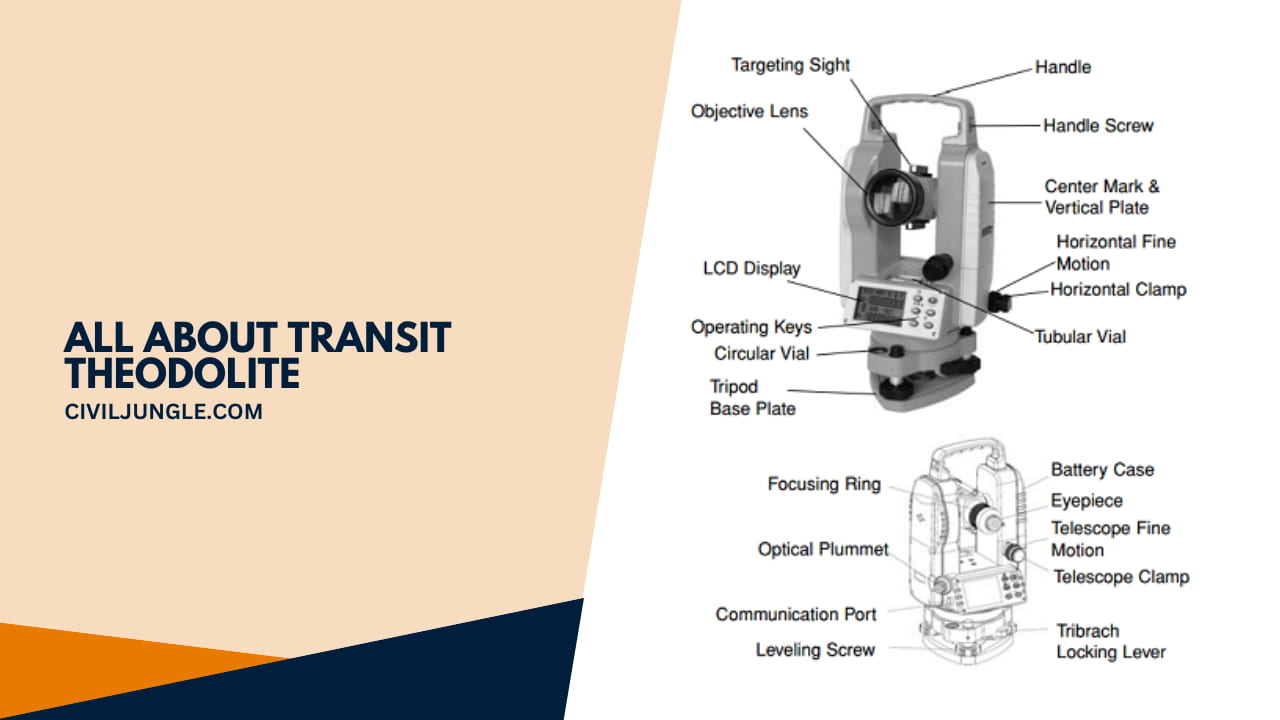
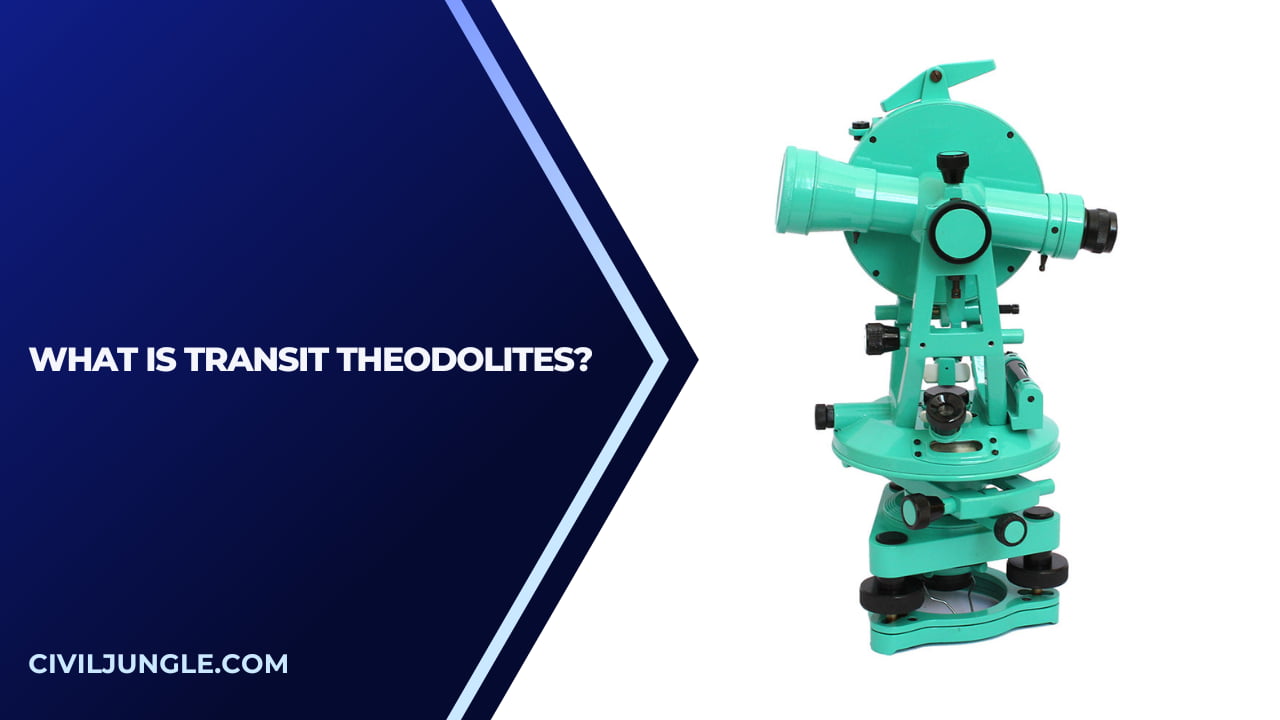
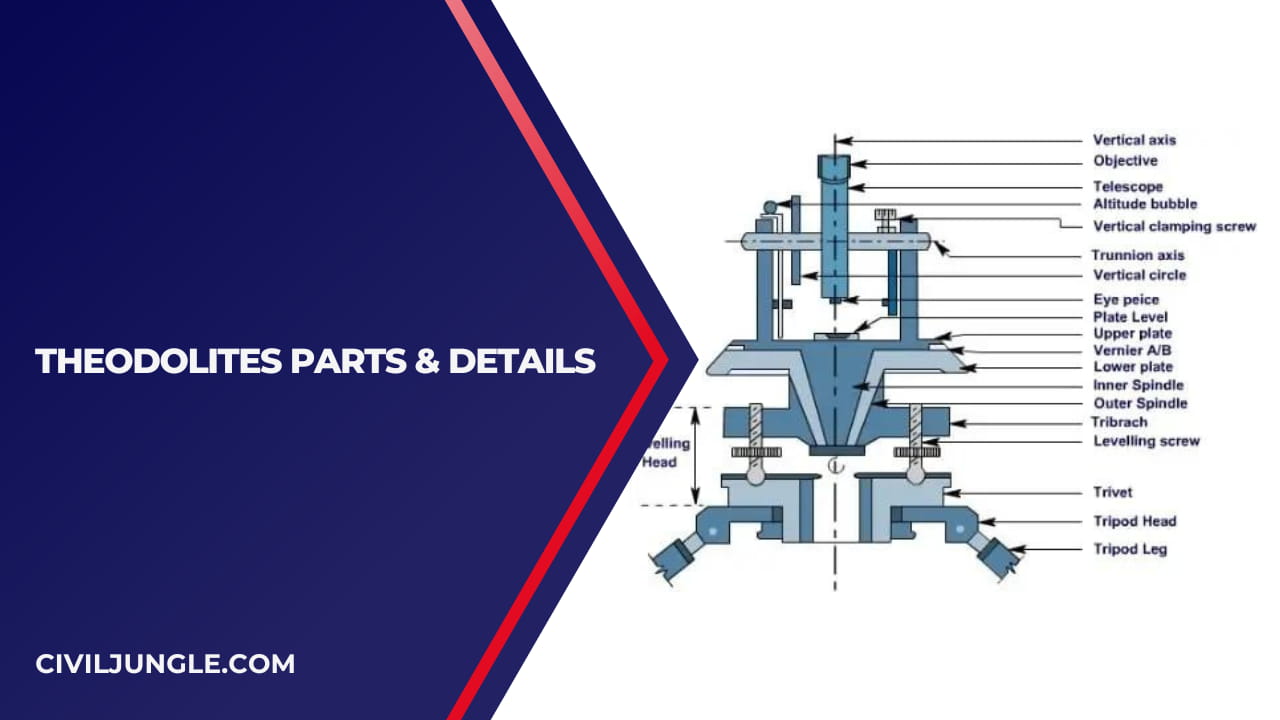
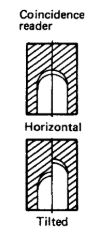
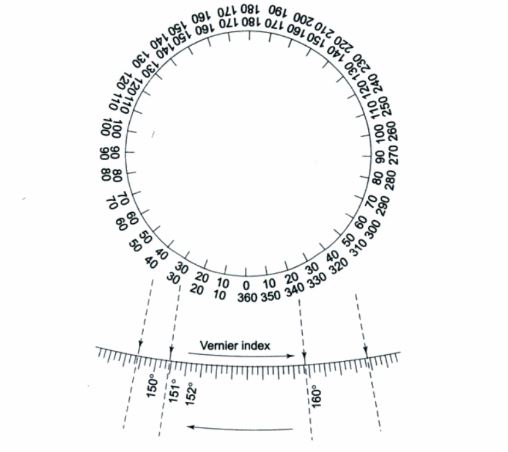
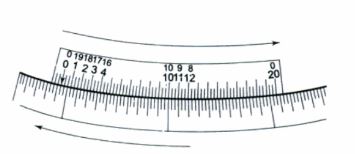
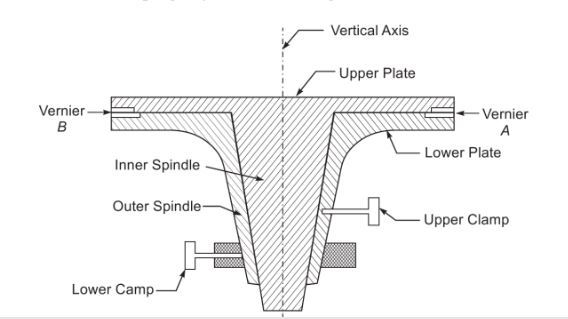

Leave a Reply